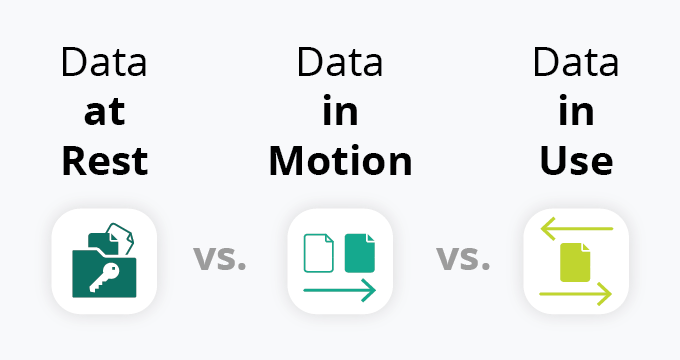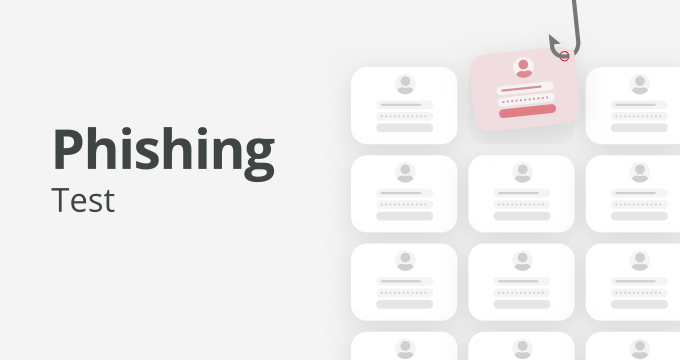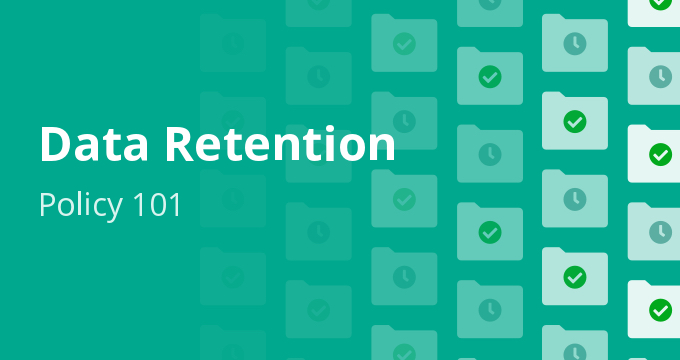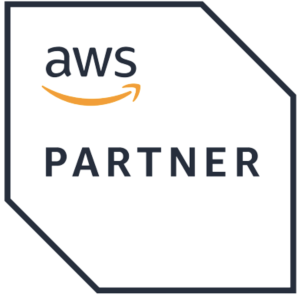As businesses increasingly rely on technology to facilitate day-to-day operations, strict security controls are necessary to shield sensitive or confidential data from unauthorized access.
Unauthorized access to data can compromise customer privacy and expose companies to significant financial risk.
To combat this, encrypting different types of data is crucial.
In this article, we’ll look at:
- What data encryption and hashing are
- Differences between data at rest, data in motion, and data in use.
- Best practices to protect each data type.
What Is Data Encryption?
Data encryption is the process of transforming data into unreadable code using a cryptographic algorithm so that nobody can access it without permission.
The encryption algorithm utilizes secret randomly generated keys to encrypt the data that can only be decrypted and turned back into readable information by using a single corresponding decryption key.
Corporations, governments, and individuals use encryption to safeguard data stored on their computing systems as well as information that moves in and out of their organizations.
This last issue is especially important for multinational enterprises, with the EU establishing new compliance standards for data traded between the US and EU member states.
What makes modern encryption algorithms so powerful and safe is the number of combinations they can use to create unique values that would take hundreds of years to decrypt.
What is a hash value?
A hash value or hash code is a unique string of characters generated by a hash function or algorithm.
Hash functions or hashing take data inputs and return fixed-size strings of bytes that appear as sequences of numbers and letters. For example, turning a password “Password!123” into “e1j32GwX45”.
They are designed to be one-way operations meaning that they can’t be reversed to their original input which is essential for security.
Hashing in cyber security is used for various purposes:
- Password storage — Instead of storing actual passwords, security systems create values of passwords, making them impossible to compromise.
- Digital signatures — Signature messages are hashed and signed by a private key which is sent to the recipient who would be the only person able to see the signature.
- Data integrity validation — By generating a hash value of a piece of data and comparing it to a previous hash value of the same data, we can see if it was altered.
Hashing and encryption are both critical techniques used in cybersecurity, but they serve different purposes. Hashing plays a vital role in data integrity checks, password security, and digital forensics, while encryption protects the confidentiality of data in transit and at rest.
What Are The Three States of Data?
Digital data is diverse in type and purpose. However, all data can be classified into three different states:
- Data at rest
- Data in motion
- Data in use
These states represent where the data is in the system and how it’s being used at the given moment.
It’s important to know that data can change its state quickly and that understanding each state in-depth is important in choosing the right encryption strategies for each.
Let’s analyze each data state.
What is data at rest?
Data at rest is the data that isn’t actively traveling between devices or networks nor is it in any sort of use. It’s usually kept on hard drives, personal computers, or databases.
Because it’s often kept preserved in cold storage or a protected server it’s much less likely to get hacked or accessed by unauthorized personnel.
However, because most crucial data is at rest, it’s the most valuable type of data for hackers looking to do you harm.
Data at rest can be information saved in a database or data kept on a hard drive, computer, or portable device.
What is data in motion?
Data in motion or data in transit refers to information traveling from one point to another which includes email, instant messaging, collaborative tools, or any other communication channel.
Due to its nature of being transmitted, this type of data is susceptible to interception attacks, which is the most common way your data can be stolen.
This makes data in motion one of the most vulnerable data types which must be protected by the most sophisticated encryption algorithms.
What is data in use?
Data in use refers to the data actively being accessed and processed by users or other software.
Data is most vulnerable in this stage, whether it’s being read, processed, or updated, because it’s immediately available to an individual, leaving it exposed to attack or human mistake, all of which can have serious implications.
While each software has its own encryption methods, it’s crucial to keep this type of data safe from any unauthorized access.
How To Protect Data in Motion vs. Data at Rest vs. Data in Use
Protecting your data is important and requires setting up the right privacy systems for each data type.
All data types have different risks involved. For example, data in use and in motion have significantly more risks than data at rest.
Knowing how to protect each data type is key.
Before we cover particular strategies for protecting data in its three forms, there are two things you should keep in mind.
First, reactive data protection is ineffective. Once a company’s data is compromised, the focus switches from protection to risk management and damage control.
Instead of playing catch-up, you should assess which data is in danger and implement proactive protection methods to prevent attacks from occurring.
Second, smart classification is crucial for smart protection. Companies will be in the greatest position to adopt the most effective security methods if they categorize all of their data and understand its risk profile in each state.
Here’s what you can do to protect each data type you are handling.
Best practices for data in motion
- Create strong foundations — Firewalls and authentication are basic but powerful network security technologies for defending against malicious assaults and attempted breaches.
- Implement automated policies and controls — Today’s data security solutions include automated rules that prevent dangerous files, warn users when they are in danger, and automatically encrypt data in transit. This assists businesses in safely managing an increasing number of email attachments, portable disks, and information transfers.
- Implement email encryption — Encrypting email guarantees that its contents are secure and that any attachments are encoded. Encryption can be used to aid with security and categorization in email delivery, directory sync, and email archiving.
- Use a DLP solution — A data loss prevention (DLP) solution assists businesses in preventing the loss of IP, customer data, and other sensitive information. DLPs monitor all emails for possible leaks by employing configurable rules based on keywords, file hashes, and dictionaries. Suspicious emails can then be banned or sent through a secure messaging gateway, depending on the regulations of the organization. To aid this system, you need to implement a proper data loss prevention policy.
Best practices for data in use
- Implement data controls before usage — Before anybody can access the information, safeguards for data in use should be put in place. There is no way to regulate what a hacker does with the data they’ve gotten after a sensitive document has been hacked.
- Increase your identity management efforts — Identity theft is on the rise, especially as people share more of their personal information online than ever before. Identity management systems assist organizations in ensuring that users are who they say they are before granting access to any paperwork, hence lowering the risk of fraud.
- Manage access rights — Using digital rights protection, information rights management (IRM), or another way, you should deploy security solutions to limit user actions with the data they access.
Best practices for data at rest
- Use complete disk encryption to be safe — A misplaced laptop or tablet may only cost a few hundred dollars, but the data on its hard disk may be worth a lot if it gets into the wrong hands. Malicious users cannot access the data on a lost drive without the proper logins thanks to full disk encryption.
- Implement DLPs — In addition to safeguarding data in transit, DLP solutions enable organizations to search for and discover sensitive material on their networks, as well as prohibit access for certain individuals.
- Extend loss prevention to the cloud — Cloud access security brokers (CASBs) let businesses apply DLP policies to data that is stored and shared in the cloud. This can be seen in back-end systems and collaboration platforms like Slack and Microsoft 365. The way a CASB works is similar to that of a DLP, but its policies and features are tailored to the cloud.
- Secure mobile devices — Mobile phones and tablets are commonplace in the modern workplace, and mobile device management (MDM) is a popular method of managing the data stored on these devices. MDM technologies restrict data access to corporate applications, ban devices that fall into the wrong hands, and encrypt whatever data they contain so that it is indecipherable by anybody other than authorized users.
Summary of the Main Points
- Data encryption converts readable information into secure, coded content using cryptographic algorithms and keys to prevent unauthorized access, whether the data is stored or transmitted.
- Hashing generates fixed-size, irreversible values for passwords, digital signatures, and data integrity checks. Unlike encryption, it cannot be reversed to reveal the original data.
- Encryption and hashing serve different security roles — encryption protects confidentiality, while hashing ensures authenticity and integrity, especially in cybersecurity and forensics.
- Digital data exists in three states — at rest, in motion, and in use, and each state presents different security risks that require tailored encryption and protection strategies.
- Data at rest is stored on physical or cloud systems and, while less exposed, it’s a common target for cybercriminals due to its high value. Full disk encryption and data loss prevention tools help mitigate this risk.
- Data in motion includes any data being transmitted over networks, making it highly vulnerable to interception. Email encryption, secure file transfers, and DLP tools are essential to protect it.
- Data in use is actively being processed by users or software and is exposed to internal threats or accidental leaks. This requires strong access controls, identity verification, and rights management.
- Proactive protection is more effective than reactive security, and organizations must classify data based on risk and apply encryption accordingly before breaches occur.
- Best practices include building layered defenses like firewalls, automated encryption policies, mobile device management, CASBs for cloud environments, and security monitoring across all systems.
Protect sensitive data across all environments with Jatheon’s secure archiving solution. Ensure encrypted storage, maintain compliance, and simplify ediscovery for all your communication records. Contact us at sales@jatheon.com or book a demo to see how we can help.
FAQ
What data should be encrypted?
Many types of data should always be encrypted to ensure protection against unauthorized access. This includes personally identifiable information, financial records, customer information, confidential business data, and any other information that could lead to privacy breaches or legal implications. Encryption should be applied to all three data states to provide the most protection.
When should data be encrypted?
Data should be encrypted when stored or transmitted to prevent unauthorized access or interception. It can be decrypted only during active use, then re-encrypted immediately after to maintain security.
What types of data encryption are there?
There are three types of data encryption: symmetric (uses one key for both encryption and decryption), asymmetric (uses a public-private key pair), and hashing (a one-way method that creates irreversible values for data verification and integrity). Each serves a different role in securing sensitive information.
Which encryption is most secure?
Currently, AES 256-bit encryption is the most secure encryption standard available. It uses a 256-bit key length and is widely used in symmetric encryption as a highly secure and robust option for data protection. AES 256 is the evolution of the AES 128-bit encryption standard which has never been broken in the past and would take hundreds of years to break. This means that AES 256 which is much more advanced is sure to keep any data safe without a reliable way to be cracked.
Is data encryption expensive?
The cost of data encryption varies based on the encryption method, the scale of implementation, and resources required for data and key management. The benefits of encryption far outweigh the potential risks of data breaches and the legal risks involved if data isn’t encrypted.
Can encrypted data be hacked?
Yes, in theory. Any data encryption can be hacked, but it requires a significant amount of time and computing power to crack. Encryption greatly reduces the chances of successful hacking to nearly zero. Still, no security measure is invulnerable, and hacking techniques are getting better and better, meaning it’s crucial to use up-to-date encryption methods to prevent hacking.
What’s the difference between data encryption and hashing?
Encryption is a two-way process where data is encoded and can be decrypted using a key. Hashing is a one-way process that transforms data into a fixed-size value that cannot be reversed, commonly used for verifying data integrity and storing passwords securely.
What happens if encrypted data is stolen?
If strong encryption was properly implemented and the decryption keys were not compromised, the stolen data would be unreadable and effectively useless to attackers. However, stolen encryption keys or weak encryption can still result in a data breach.
What industries are legally required to encrypt data?
Many regulated industries, including healthcare, finance, government, and education, are required by laws like HIPAA, PCI-DSS, GDPR, and GLBA to encrypt sensitive personal and financial data. Failure to comply can result in fines, legal action, and reputational damage.











